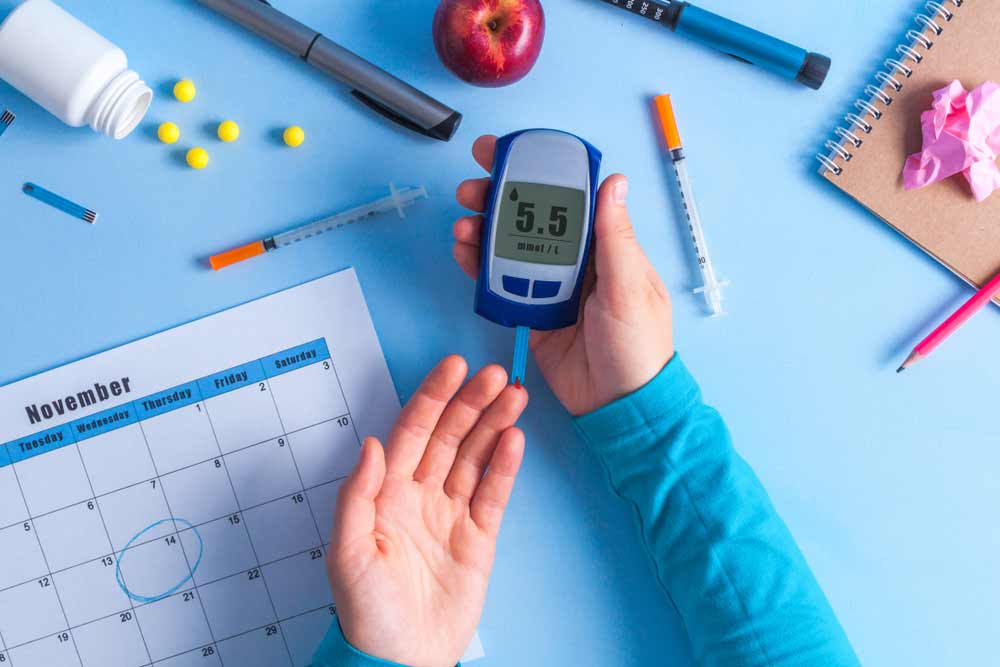Can I Check My Own Glucose Levels?
- Author: Eli Waters Medical Centre
- Published:
If you live with diabetes, it’s crucial you keep your blood glucose levels within a particular range. Monitoring your blood glucose can help you stay on top of your health, avoid complications, and create an effective balance of foods, activity, lifestyle choices, and medications. People with diabetes often query whether they can check their glucose levels themselves. We’ve put together this helpful blog to alleviate any concerns.

Checking Your Glucose Levels Yourself
If you have diabetes, you’ll be pleased to know you can easily check your blood glucose levels yourself. The frequency of checks will depend on various factors. If you have type 1 diabetes, it’s usually recommended you check your levels four times a day, but many people do check more often. If you have type 2 diabetes and do not use insulin, you may not need to check your levels as regularly but could benefit from structured self-monitoring.
If you practice structured self-monitoring, you will check your levels at set times of the day, such as before or after meals, for a set period. This will help you and your healthcare team to establish the impact of food, activity and medications on your blood glucose levels.
Things You'll Need
To check your blood glucose levels, you’ll need to have the following on hand:
- Blood glucose meter
- Lancet device and lancets
- Blood glucose strips
You will usually find blood glucose meters are sold as kits with all you’ll need to start self-monitoring at home. There are a lot of options available, according to various patient needs, and your doctor can help you identify the right meter for your circumstances.
Self-monitoring Your Levels
Your blood glucose meter will instruct you as to how to check your levels. In terms of frequency of checks, timing, and the levels that are right for you, your doctor should guide you on what’s appropriate. They’ll also encourage you to keep a record of your levels to help inform your treatment.
There are particular times when you will need to check your levels more often, and your doctor can help you understand what’s involved. These occasions might include:
- Increased or decreased physical activity
- Illness or higher stress levels
- Changes in routine or eating habits, such as if you are travelling
- Changes to your insulin or medications
- Episodes of hypoglycaemia or hyperglycaemia
- Experiencing night sweats or morning headaches
- Trying to become pregnant or falling pregnant
- Before and after minor surgery
- Following dental work
The Importance Of Checking Your Blood Levels
Checking and recording your blood glucose level can inform your lifestyle choices and what you need to do to stay healthy. You’ll gain the confidence you need to manage your health, and develop a greater awareness of how the food you eat, the activity you do, the medications you take, and the lifestyle factors you experience impact your blood glucose levels. Additionally, any changes in your blood glucose level patterns can guide both you and your treatment team to better management options for your diabetes.
If you feel unwell, checking your blood glucose levels can alert you to possible hyperglycaemia (raised levels) or hypoglycaemia (low levels). From this reading, you can take necessary action, such as eating before you exercise, addressing low levels, or obtaining medical support or advice.
The Levels To Aim For
There’s no one-size-fits-all when it comes to health. Managing diabetes is centred around balancing your food intake, activity, and medications. As this is not easy, it’s natural your blood glucose levels won’t always be optimal.
Your ideal range will be specific to you and your circumstances. You must keep your blood glucose levels as close to the target range of between 4 to 6 millimoles per litre of blood (mmol/L) when fasting to avoid complications and to clarify your ideal levels with your doctor. The following suggested levels should be taken as a guide only.
- Type 1 diabetes: 4-8 mmol/L before meals, <10 mmol/L two hours after beginning a meal
- Type 2 diabetes: 6-8 mmol/L before meals, 6-10 mmol/L two hours after beginning a meal
Fluctuations In Levels
If your reading is higher or lower than normal, you might naturally be concerned. Sometimes it is easy to determine the cause, and on other occasions, it may be difficult to identify the reason. Here are some common factors influencing changes in blood glucose levels:
- Food: the time you eat, the type of food you eat, and the amount of carbohydrates eaten
- Exercise or activity
- Illness: a virus or flu will almost always raise your levels, and you may need to consult your doctor
- Pain
- Medication
- Alcohol intake
- Stress
- Monitoring techniques
Contact Us
If you have diabetes, the friendly, caring team at Eli Waters Medical Centre can help. We’ve proudly served the locals of Hervey Bay for years, and have the medical professionals and dietetic support on hand to offer tailored solutions and individualised diabetes management plans designed to help you and your family look after your health. Our team is here to offer the support you need to navigate your journey with diabetes and live the life you want. Contact us today on (07) 4128 4563.




